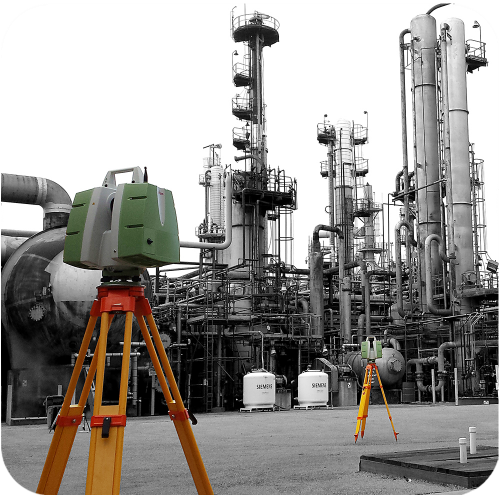
Historic buildings stand as silent witnesses to the passage of time, bearing the scars of centuries while retaining their timeless beauty and cultural significance. These architectural marvels are more than just structures; they are living artifacts that tell the stories of generations past and embody the essence of our shared heritage. However, preserving historic buildings presents a unique set of challenges, from structural deterioration to the threat of natural disasters and urban development. In the quest to safeguard these treasures for future generations, 3D laser scanning has emerged as a 3d laser scanning historic buildings that is transforming the field of heritage preservation. In this article, we’ll explore the importance of 3D laser scanning for historic buildings and how it is helping to preserve the past for the future.
Capturing Precise Documentation: One of the greatest challenges in preserving historic buildings is accurately documenting their architectural features and structural integrity. Traditional methods of documentation, such as manual measurements and photography, can be time-consuming, labor-intensive, and prone to human error. 3D laser scanning offers a more efficient and precise alternative, allowing preservationists to capture highly detailed, three-dimensional representations of historic buildings with unparalleled accuracy. By creating digital replicas of these structures, 3D laser scanning provides a comprehensive record of their current state, ensuring that even the smallest details are preserved for future reference and analysis.
Facilitating Restoration and Conservation: Historic buildings often require restoration and conservation efforts to address structural deficiencies, stabilize deteriorating materials, and repair damage caused by age, weather, or human activity. 3D laser scanning plays a crucial role in these efforts by providing preservationists with the data they need to accurately assess the condition of historic buildings and develop effective restoration strategies. By creating precise 3D models of building components, such as facades, windows, and decorative elements, 3D laser scanning helps preservationists identify areas of deterioration, plan targeted interventions, and ensure that restoration work is carried out with the utmost care and precision.
Minimizing Risk and Cost: Restoration and conservation projects for historic buildings are often complex and costly endeavors that require careful planning and coordination. 3D laser scanning can help minimize the risk and cost associated with these projects by providing preservationists with detailed insights into the condition of historic buildings and potential challenges they may encounter. By identifying structural issues early on and accurately assessing the scope of work required, 3D laser scanning enables preservationists to develop cost-effective strategies that prioritize the preservation of historic fabric while minimizing disruption to the building and its surroundings.
Supporting Disaster Preparedness and Response: Historic buildings are vulnerable to a range of natural and man-made disasters, including fires, floods, earthquakes, and vandalism. In the event of a disaster, quick and effective response is crucial to minimizing damage and preserving the integrity of these irreplaceable structures. 3D laser scanning can support disaster preparedness and response efforts by providing preservationists with up-to-date documentation of historic buildings that can be used to assess damage, prioritize recovery efforts, and inform reconstruction and restoration plans. By having access to accurate 3D models of historic buildings, preservationists can expedite the restoration process and ensure that these cultural treasures are preserved for future generations.
Facilitating Virtual Access and Education: 3D laser scanning not only helps preserve historic buildings physically but also facilitates virtual access and education, allowing people to explore and learn about these cultural treasures from anywhere in the world. By creating immersive virtual tours and educational experiences based on 3D scans of historic buildings, preservationists can engage audiences of all ages and backgrounds and foster a deeper appreciation for our shared heritage. Virtual access to historic buildings also enables researchers, students, and scholars to study and analyze architectural features and construction techniques in unprecedented detail, furthering our understanding of the past and informing future preservation efforts.
Promoting Cultural Tourism and Economic Development: Historic buildings are not only valuable from a cultural and historical perspective but also play a significant role in promoting cultural tourism and driving economic development in communities around the world. By preserving and showcasing these architectural treasures, communities can attract visitors, stimulate local businesses, and generate revenue through heritage tourism initiatives. 3D laser scanning can help communities leverage the potential of their historic buildings by providing accurate documentation and virtual access that enhances visitor experiences and encourages sustainable tourism development.
Empowering Community Engagement and Advocacy: Historic preservation is a collaborative endeavor that relies on the support and involvement of local communities. 3D laser scanning can empower communities to actively participate in the preservation of their historic buildings by providing them with the tools and knowledge they need to advocate for their protection and stewardship. By engaging community members in the documentation and interpretation of historic buildings through 3D laser scanning projects, preservationists can foster a sense of ownership and pride in local heritage and ensure that these cultural treasures are preserved for future generations to enjoy.
In conclusion, 3D laser scanning is a powerful tool that is revolutionizing the field of historic preservation by providing preservationists with the means to accurately document, analyze, and protect our architectural heritage. From capturing precise documentation to facilitating restoration and conservation efforts, 3D laser scanning plays a crucial role in safeguarding historic buildings for future generations. By harnessing the potential of this transformative technology, we can ensure that our cultural treasures continue to inspire, educate, and enrich the lives of people around the world for centuries to come.